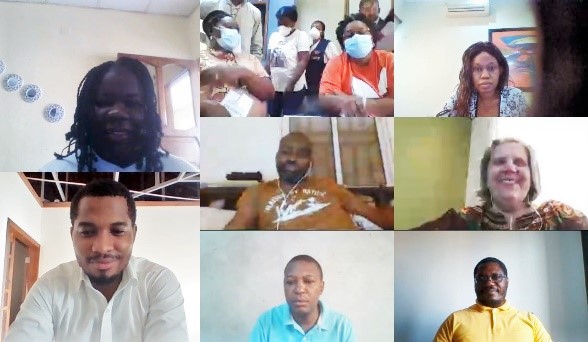
From February to June 2020, Angola performed for the first time a remote, on-line quantification exercise to support the transition to TLD, the preferred first-line HIV/AIDS treatment.
Angola’s Ministry of Health (MOH) made the decision to begin the transition to TLD with ministerial approval in March to align with the World Health Organization’s HIV treatment guidelines and to fulfil on the government’s aim to improve HIV/AIDS services to patients on treatment.
Growing concerns about the COVID-19 pandemic increased the urgency for the quantification exercise to help plan for multi-month dispensing (MMD) of TLD and other commodities. MMD can help reduce the spread of COVID-19 among patients and health care providers by reducing from monthly to once every three months the number of patient trips to pharmacies. Reducing the number of trips to pharmacies in turn helps reduce congestion at pharmacies and other health facilities, thereby facilitating social distancing.
New 90-count bottles of TLD will also support MMD implementation. However, implementation of MMD requires careful planning and an initial increase in supply of antiretroviral medicines (ARVs) at health facilities to reduce risks to supply; As patients begin taking home 90 pills rather than the usual 30, the usual stock of ARVs would soon run low. The USAID Global Health Supply Chain Program-Procurement and Supply Management (GHSC-PSM) project led the quantification exercise, which included the MOH’s National Institute of HIV (INLS), National Directorate of Medicines and Equipment (DNME) and UNDP. DNME is the regulatory entity for new drug introduction, and UNDP is the purchasing agent for the Global Fund and INLS. ICAP, a key PEPFAR implementing partner, also participated to represent an important clinical perspective.
Benefits to patients and healthcare facilities will extend long after COVID-19. The transition to TLD and MMD aims to increase adherence to treatment, reduce costs for procurement of ARVs, reduce the burden on health care professionals while increasing the time available to spend with each patient, optimize storage space and reduce medical waste.
“Together we are stronger and more capable. Although we are passing through challenging times due to the COVID-19 pandemic, everyone demonstrated zeal and commitment to accomplish the goals established, and the results of this exercise will allow us to respond to the country needs," explained Dr. Lúcia Furtado, Director of INLS.
In the coming months, the MOH, GHSC-PSM and other partners will monitor and measure the actual impact of transition to TLD and MMD.


